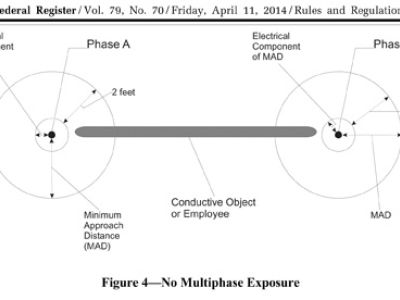Jim Vaughn, CUSP

Jim Vaughn, CUSP
After 25 years as a transmission-distribution lineman and foreman, Jim Vaughn, CUSP, has devoted the last 24 years to safety and training. A noted author, trainer and lecturer, he is a senior consultant for the Institute for Safety in Powerline Construction. He can be reached at jim@ispconline.com.
August 2016 Q&A
Q: We have heard that OSHA can cite an employer for violation of their own safety rules. How does that work? A: OSHA’s charge under the Occupational Safety and Health Act is the protection of employees in the workplace. The agency’s methodology has always assumed the employer knows – or should know – the hazards […]
Train the Trainer 101: Practical Recommendations for Wire Stringing
| Jim Vaughn, CUSP | Safety Management, Worksite Safety, Train the Trainer 101, Equipment Operations
In the last installment of “Train the Trainer 101,” we discussed grounding when stringing in energized environments (see http://incident-prevention.com/blog/train-the-trainer-101-grounding-for-stringing-in-energized-environments). Many readers responded with questions regarding the myriad issues they have faced during stringing. I learned a lot about this type of work during my first 25 years in the trade. In stringing hundreds of miles […]
June 2016 Q&A
Q: Is a transmission tower leg considered a lower level? And is there an exception for hitting a lower level when someone is ascending in the bucket truck to the work area? Our concern is that the shock cord and lanyard could be long enough that the person could hit the truck if they fell […]
Train the Trainer 101: Grounding for Stringing in Energized Environments
| Jim Vaughn, CUSP | Safety Management, Worksite Safety, Train the Trainer 101, Equipment Operations, Grounding
A few years ago I came upon a crew using 6-inch chocks to hold back a 38-ton crane truck. I told the crew I was happy that they were making an effort at compliance, but I had to ask them, “Why do we place chocks under a truck’s wheels? Is it to comply with our […]
April 2016 Q&A
Q: What is an employer’s affirmative defense relative to an OSHA charge and how does it work? A: In simplified legal terms, an affirmative defense is the act of an accused party putting forth a set of alternative claims or facts. The purpose of the accused party doing this is to mitigate the claim against […]
Train the Trainer 101: Safety Cops and the Continuum of Safety
Words have power. We confirm that every day when we examine why people do what they do. Communication is often the root cause of accidents, particularly how the receiver interprets what he or she hears. That communication is not always something said in the moments before an incident; it can occur days, weeks or months […]
February 2016 Q&A
Q: I work for a small utility and am new to my safety role. Recently I have been wading through the Federal Motor Carrier Safety Regulations (FMCSR) in an attempt to understand my responsibilities with regard to testing CDL drivers. Can you briefly explain these responsibilities? A: FMCSR 391.31 requires the employer to ensure a […]
Train the Trainer 101: Practical Underground Safety: Handling Neutrals and Rescue
Over the years I spent as a lineman, I did my share of underground installation and maintenance work. During my years in safety, I have seen the expansion of safety processes associated with underground, especially in response to the most recent OSHA changes. Not all of the changes have been effective, and that’s why we’re […]
December 2015 Q&A
Q: I’ve been reading ASTM 855, IEEE 1048 and the National Electrical Code, and I’m a little confused by the practice of grounding through a switch. Can you help me better understand this? A: In transmission/distribution applications, there is no issue with grounding through a switch. To explain, we always have to ask whether the […]

Train the Trainer 101: Practical MAD and Arc Flash Protection
Author’s Note: Before we get to the article, I want to thank the members of Incident Prevention’s editorial advisory board for their help in assembling this installment of “Train the Trainer 101.” They help me keep my head on straight, especially when I have ideas that are way outside the box. Even though I am […]

